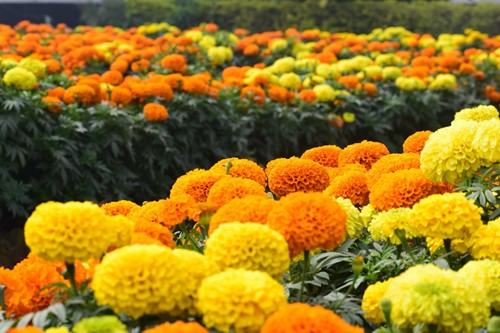Email: [email protected]

When planning an outdoor garden, many want to prioritize plants that attract and support local pollinators. Bees, butterflies and hummingbirds can add an enjoyable presence to your yard and help your plants and local ecosystem thrive. However, it's also important to protect and support your own animal friends. While many popular flowers and plants are toxic to dogs and cats, pentas and many other options are perfectly safe and help pollinators. Here are some suggestions:
Pentas can grow in pots or in the soil anywhere they can get 6 to 8 hours of sun per day. These plants produce clusters of tiny, star-shaped flowers in white, pink, red and purple. Their blooms attract butterflies, hummingbirds and honeybees throughout their growing season. While supporting your local pollinators, they pose no threat to your pets--both the flowers and leaves of this plant are completely non-toxic.
Marigolds are common in gardens everywhere for their ease of care and variety of colors. While they thrive in full sun and warm temperatures, they're hardy enough to be a great choice of flower for planting in containers or in the ground. Luckily, this popular and easy-to-grow flower attracts pollinators to your garden, particularly butterflies, and is completely safe for your pets.
Snapdragons are dramatic looking plants with a strong fragrance. Their aroma helps make them especially attractive to bees, butterflies and hummingbirds. Most varieties of snapdragon are grown as annuals, but they can also be perennials in certain climates, providing tall clusters of blooms in white, pink, orange and red year after year. Snapdragons are a favorite among pollinators and pet-owners for being a safe source of beauty and nectar in any garden.
Unfortunately, many great pollinator-supporting plants are not safe for your pets. Some of the most popular examples include lavender, chamomile, geranium and azaleas. If you choose to grow these plants, consider keeping them in containers where your pets cannot get to them. Otherwise, remember these suggestions for plants that help pollinators without putting your pets at risk.

Georgina was born and raised in Paris, France. She studied Mathematics and Biology at the University of Paris. She settled in Marin County where she and her husband raised their two children. She was on tour with Cirque du Soleil, managing and chaperoning her young daughter who was one of the show's featured performers. During this time, they worked and traveled throughout Canada and the USA. Georgina appreciates the beauty of the Bay Area and Sonoma. She especially enjoys the nice weather, diversity, and culture. She became a tax preparer and an Enrolled Agent. She decided to become a Realtor® and is pleased to join Keller Williams Realty. For fun, she enjoys traveling and playing the Piano.
Realtor®
DRE #02104684
415.342.6794